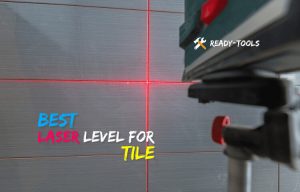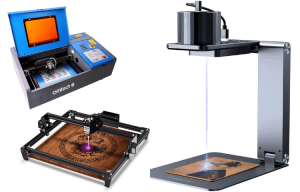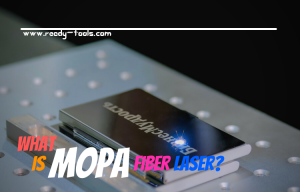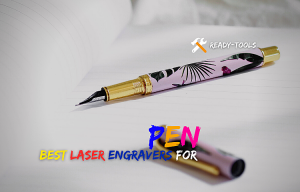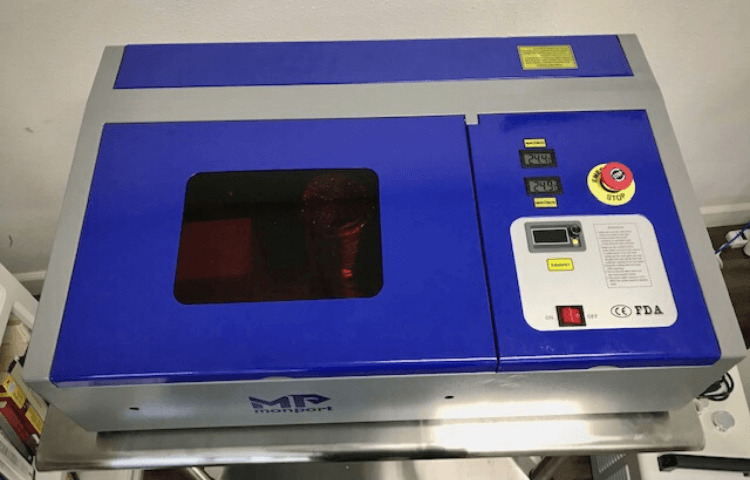
Bottom Line:
We got our hands on a Monport 40w CO2 laser engraver not too long ago, and we have to say that we are rather impressed with it! This device is a workhorse through and through. It is swift, works effectively, and is pretty simple to operate.
Monportlaser Coupon
Special Offer! Use the below coupon code to get an exclusive 6% discount:READYTOOLS
| Model | G320 40W |
| Color | Blue and Gray |
| Tube Length | 27.5in(700mm)i |
| Laser Wavelength | 10640nm |
| Laser Frequency | 20-100kHz |
| Min. Engraving Depth | 0.008in(0.2mm) |
| Max. Engraving Depth | 0.12in |
| Graphic Operating Modes | Raster, Vector, Combined |
| Certification | CE,ISO9001,FDA |
| Power Consumption | 350W |
| Rated Power | 40W |
| Input Power | 110V/60Hz |
| Max. Resolution | 2500 (1500 dpi Recommended) |
| Min. Line Width | 0.02in(0.508mm) |
| Precision | 0.01in(0.254mm) |
| Net weight | 48.5lb(22kg) |
| Expected service Life of Laser Tube | 1500-2000hours |
| Laser Type | Class4CO2 |
| Processing Area | 8x12in(200x300mm) |
The USB connector that comes standard on the Monport 40w CO2 laser engraver makes it simple to establish a connection with your personal computer. The computer is compatible with Windows and Mac operating systems, and the software is relatively simple.
The machine has exceptional quality and can engrave various materials, including plastics, glass, metal, and wood. The engraving quality is superb. When we saw how wonderfully it performed on multiple materials, it completely blew our minds. Let’s talk more specifically about this topic now, shall we?
Monport 40w Co2 Laser Engraver:
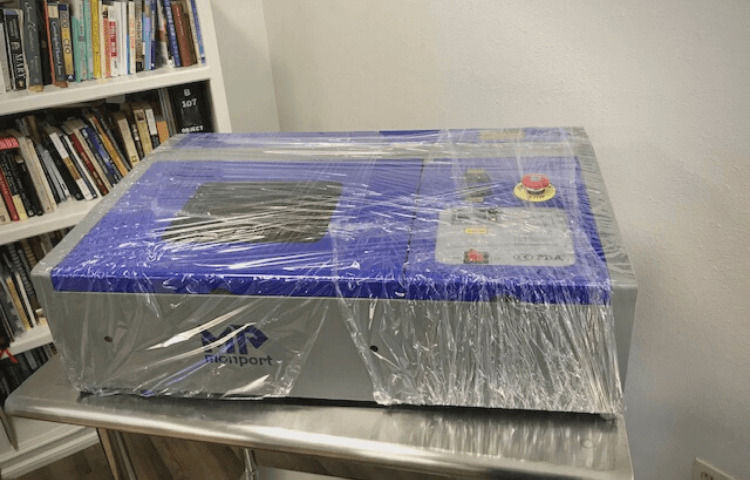
Wood, glass, and metal can all be engraved with this Monport 40w Co2 Laser Engraver, making it one of the most effective tools. It is ideal for anyone who operates a home-based business or pursues a hobby and wants to give their wares a more personalized feel.
The device may be operated either through a USB port or an Ethernet connection, and it also has software that makes it very simple to use. The engraver is outfitted with a high-quality laser capable of engraving up to one thousand letters per minute.
Additionally, it contains an LCD that can show you how far along your job is. The machine is quite simple to set up and operate and has a guarantee for one year.
Components of Monport 40w Co2 Laser:
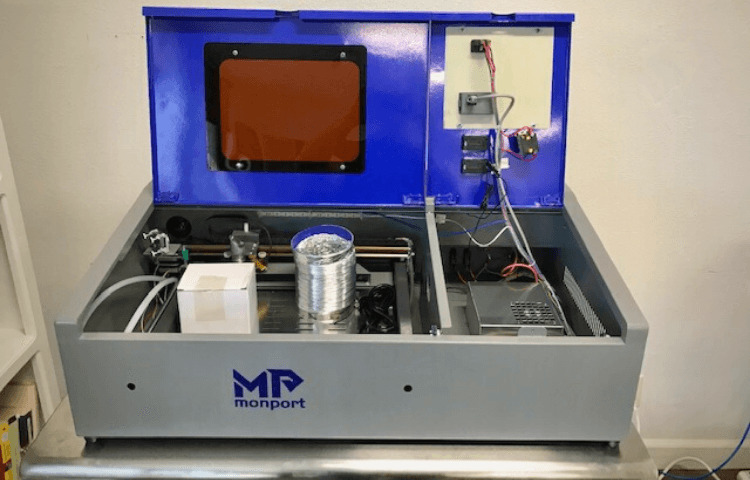
Main Bay (Cover): The lid provides access to the center bay, which makes it possible to position and retrieve materials and make adjustments to and perform maintenance on the laser path alignment and other components.
Control Panel: Through the machine’s built-in control panel, one can exercise personal control over the engraving process.
Digital Temperature Gauges: Utilize digital temperature gauges to keep an eye on the temperature of the laser source of power and the water used for cooling. (the accuracy of thermometers is plus or minus three degrees)
Emergency Stop Button: If you find yourself in a dangerous situation, pushing the Emergency Stop Button will instantly switch off the laser tube.
Connection to the Electrical Ground: This is where you should connect the ground line to the machine. (if you do not have access to a grounded power socket that has three prongs)
Electrical Plug: Make sure that the power network and the extended power are correctly connected by following the instructions on the label.
Exhaust Fan: Connect the exhaust duct and other devices that offer external ventilation to the exhaust fan found in this position.
Water Inlet: This is where the water-in hose should be connected to either the water pump or the water chiller, depending on your use.
Water Outlet: You will attach the hose responsible for emptying the water from the water pump or the water chiller at this point.
Because of its exceptional cutting power and dependable performance, the Monport 40w CO2 laser is an instrument for cutting that is suitable for any family or small business.
It includes everything you require to get going, such as a user handbook, a power cable, and safety glasses, so you won’t have to worry about acquiring any other supplies separately. The laser is easy to use and produces precise results in its applications.
A focusing and cutting lens is included with the purchase of a Monport 40w CO2 laser. These are the two distinct types of lenses. The laser beam is focused onto the material being cut by directing it via the focusing lens. The actual act of cutting through the material is accomplished with the help of the cutting lens.
The Monport 40w CO2 laser contains a variety of built-in safety measures, including a key switch and an emergency stop button, among other things. Because of these user-friendly and accident-prevention features, operating the laser is a breeze.
Any household or small company would benefit greatly from adding the Monport 40w CO2 laser to their toolkit. It is straightforward to operate and yields accurate results. In addition to this, the laser is entirely risk-free to use.
Features:
- Over 40 watts in power rating.
- The Lightburn Program.
- Optical trajectory tuning simplicity.
- With a focal distance of 2 inches and a lens diameter of 12mm, this device is ideal for close work.
- The diameter of the mirror is 20mm.
- Speeds between 100 and 255 mm/s are suggested for engraving.
- Chopping speeds between 1 and 20 millimeters per second are suggested (actual speed depends on the thickness of the material).
- Lighting.
- The space you’re working in is well-lit thanks to an LED light strip installed beneath the lid.
- Mechanics.
- Specifically extruded aluminum linear rails for the linear rail system.
- Mechanical limit switches and stepper motors on the X and Y axes are included for motion.
- A water pump and hoses are all you need to have a good chill going in no time.
- Ventilation – Built-in exhaust fan and an exhaust hose for releasing noxious gases into the open air.
Software:
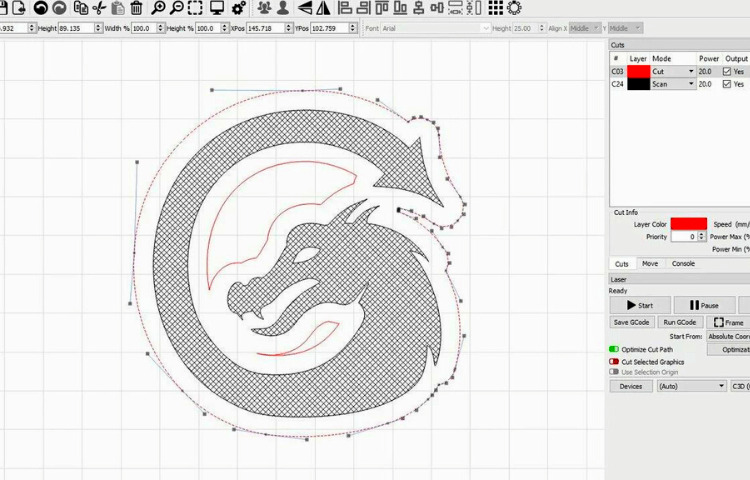
Lightburn software can be installed on your computer and used to control a laser cutter or an engraving machine. It has much power, but at the same time, it is not too difficult to work with.
It has a wide range of capabilities that let you get the most out of your system and an intuitive user interface that makes it quick and straightforward. These characteristics help you get the most out of your system.
Lightburn is a trial edition that can be tested for free before deciding whether or not to purchase the full version of the program. This program may be downloaded and installed on a computer running either Windows or Mac operating system.
You won’t have any problem getting up and running in a short time because there is such a large variety of tutorials and support materials available to you and at your disposal.
Engraving Materials:
The Monport 40W is an excellent choice if you search for a superior-quality laser engraving machine that works with various materials.
You can make gorgeous bespoke items for your house or company using this potent equipment capable of engraving various materials, including wood, glass, Rubber, Ceramics, Cardboard, Paper, Textile, Leather, Plastic, and metal.
In addition, the Monport 40W features an integrated rotating attachment, allowing you to engrave circular items such as mugs and glasses quickly and easily. In addition, the supplied software makes it simple for you to create and modify your engravings.
How much is the Speed of this Laser Engraver?
The speed of the Monport 40W Laser is amazing. It can reach up to:
- Maximum Engraving Speed 350mm/s (Recommended) Range: 100.255mm/s).
- Maximum Cutting Speed: 350mm/s (Recommended Range: 1.20mm/s).
What’s the Material to Engrave?
1. Leather:
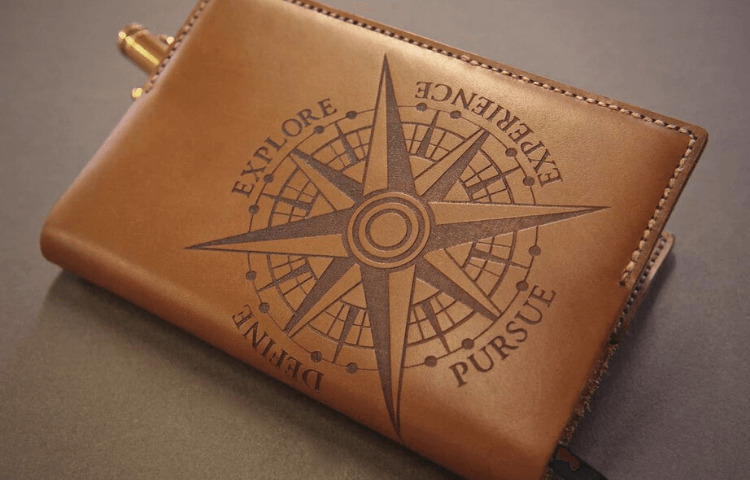
Low to moderate power should be used at a high engraving speed while working with leather items. Pay close attention to the danger of contamination and the dust that repeated applications may form.
2. Plastic:
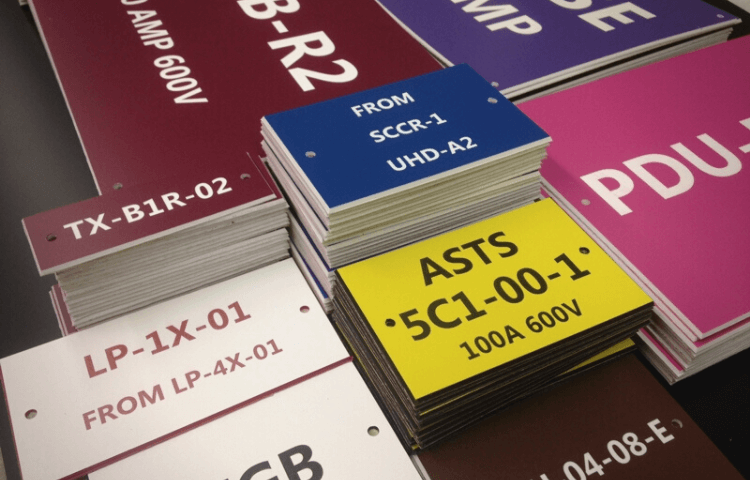
Plastics that may be engraved can be found in various hues and thicknesses and with multiple coatings and surfaces. The laser can engrave and cut the vast majority of the polymers that are now accessible. Because less material must be removed, plastics having a microporous surface appear to produce the most outstanding results.
When engraving polymers, low-power and high-speed settings are recommended for the most part. Marking and engraving with an excessive amount of power or at a too-low speed can concentrate an excessive amount of energy at the point of contact, which can cause the plastic to melt.
This may result in poor engraving quality, toxic fumes, and even fires, causing many other issues. Since engraving at a high resolution might result in the same problem, designs requiring an explanation of medium to low should be chosen for most plastics.
3. Metal:
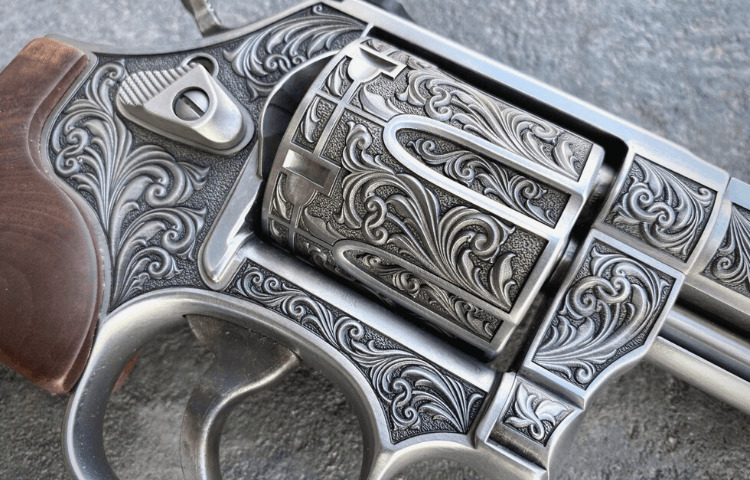
They should only be used for working on coatings applied to a metal basis, and extreme caution should be exercised to avoid working on the underlying metal itself.
The user should pay close attention to the instructions supplied since the parameters can change from product to product and metal to metal. TA wide selection of coatings re-designed explicitly for CO engraving.
Work on aluminum coatings should be performed more rapidly at lower power, whereas work on steel coatings can be performed more slowly at greater intensity.
4. Ceramics:

It would help if you used moderate and high power to engrave on ceramics. During the task process, it is possible to prevent the material from cracking by increasing the number of loops rather than the strength or speed.
Be aware of the potential danger to your health caused by the dust produced by ceramic engraving, particularly for applications in industry that need frequent repetition. To remedy the situation, you could need a fan or a whole ventilation system, depending on the substance’s nature and the task’s extent.
Similarly, operators and others in the work area may be required to wear breathing personal protective equipment (PPE) such as masks and respirators.
5. Glass:
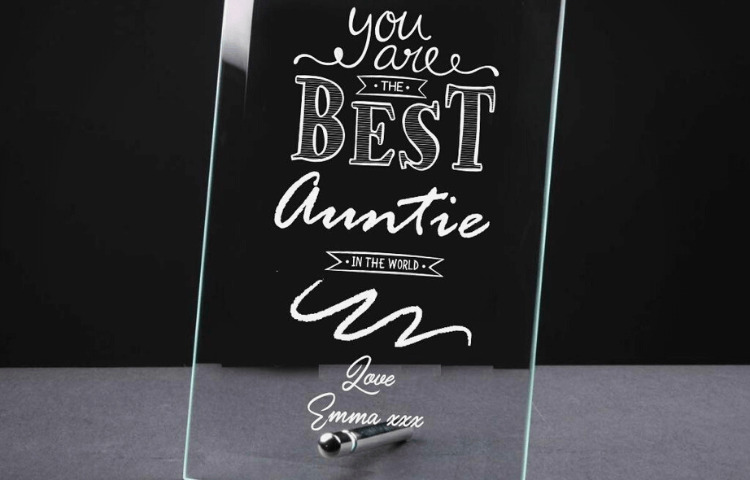
When engraving glass, you should typically use a high amount of power while engraving at a slow speed. To prevent fractures, it is often beneficial to run additional loops at lower settings, as with ceramics.
When engraving fiberglass and carbon fiber, care must be prevented combinations of settings that yield a laser intensity that is high enough to compromise the structure in much of the component fibers, which would result in a hazy marking.
When working with either material, personal protective equipment (PPE) is required to protect the user’s eyes, nose, mouth, and skin. This is especially important for repetitive industrial operations. After working with fiberglass, any cloth worn should be laundered in a separate load of laundry.
6. Rubber:
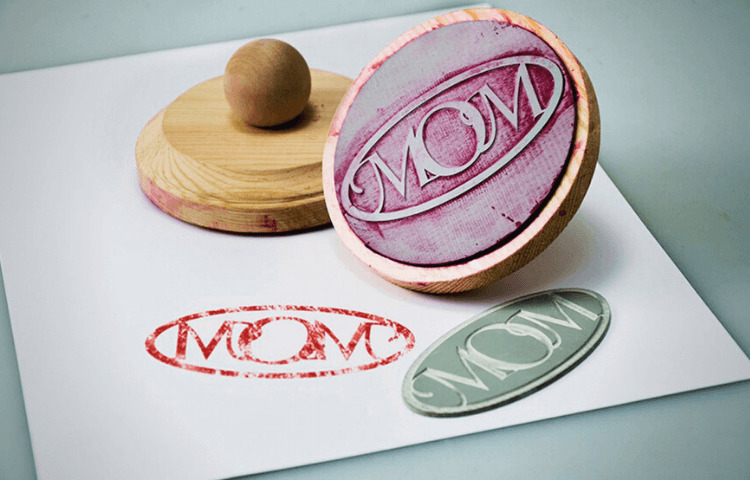
The unpredictability of the composition density of rubber results in somewhat variable etching depth. To achieve the best results, you are strongly advised to test various settings on sample pieces of the rubber you will be working with.
When engraving rubber, it is best to choose a power setting that is constantly high and to generate different effects by adjusting the laser’s pace. Made of microporous rubber materials require a speed that is noticeably higher than that of standard rubber.
When you engrave any form of rubber, you’ll generate a significant amount of dust and gas. To solve the issue, breathing personal protective equipment (PPE) and a complete entire ventilation system may be necessary, depending on the work required.
7. Paper and Cardboard:
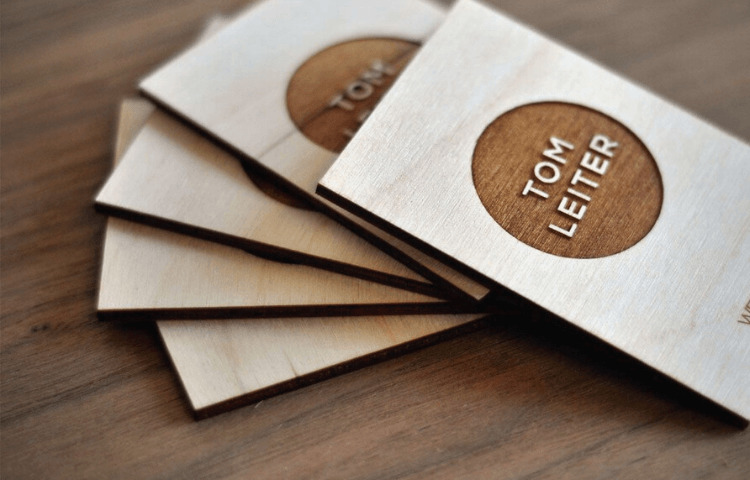
In general, it is best to utilize low to moderate power and a high engraving speed while engraving a variety of paper goods. Examine samples taken from each batch since even minute variations in one parameter can distinguish between insufficiently strong effects and those that eat through the substrate.
As with leather, pay particular attention to the likelihood of cracking and the dust formed via repeated applications.
Conclusion:
We hope that you found our review of the Monport 40W Laser Engraver to be helpful. Anyone seeking a machine capable of producing high-quality laser engravings should consider purchasing this equipment. It is straightforward to operate and yields stunning outcomes.
We suggest you look at the Monport 60W Laser Engraver if you are searching for a piece of machinery capable of handling more involved jobs. If you want to perform significant engraving, spending the extra money is in your best interest and getting the more costly option.
Coupon Alert!
Special Offer! Use the below coupon code to get an exclusive 6% discount:READYTOOLS

